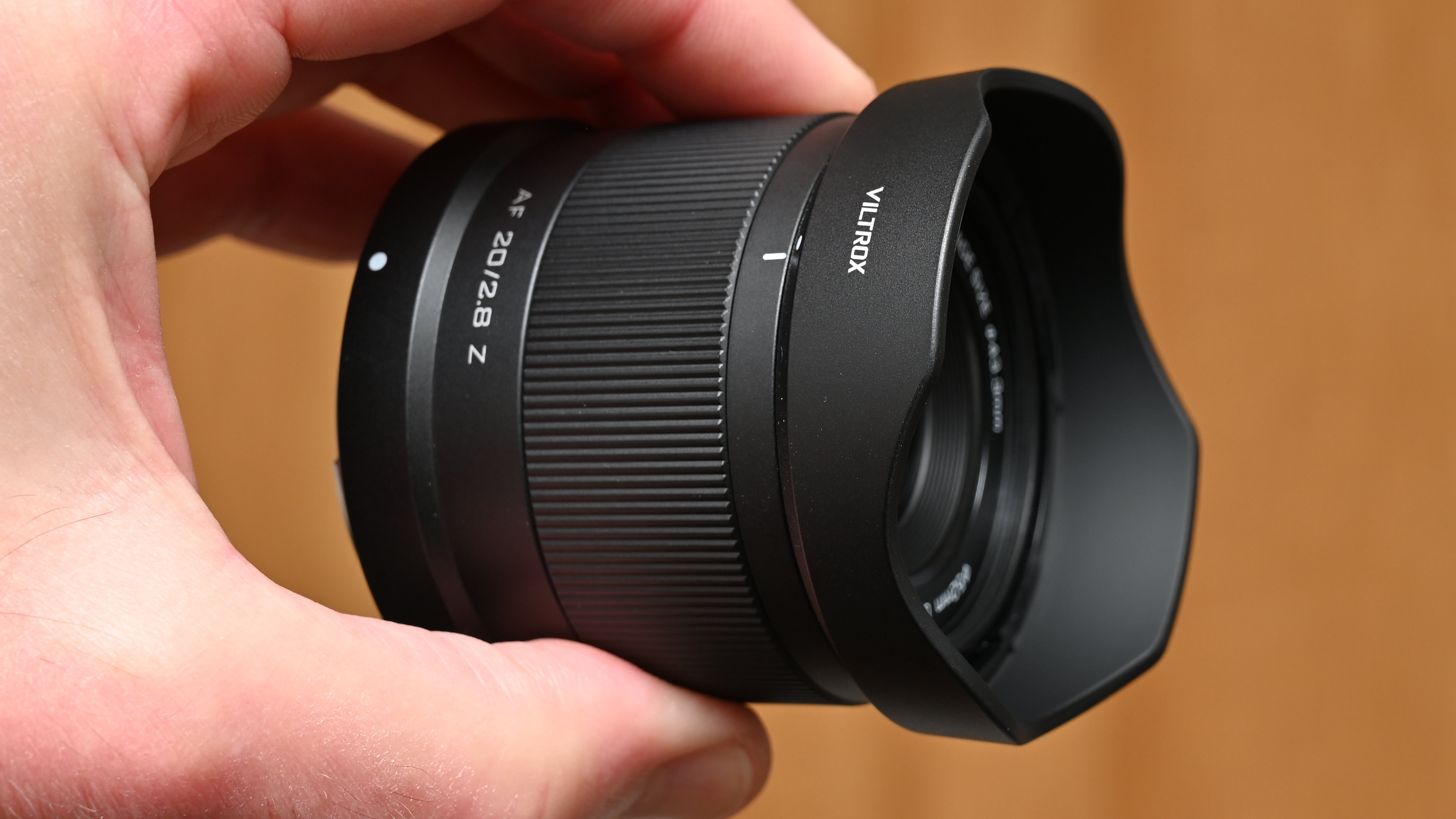12 lenses of Christmas: from super-fast f/1 glass to super-cheap $160 optics!
After the festive season of punishment to the bank balance, Viltrox announced an unfeasibly inexpensive lens in February

For the 12 days of Christmas, we're looking back on the 12 months of 2024 and the lenses that they brought. Today, we're running down February…
Think wide-angle lenses for full-frame cameras and you’re probably thinking of big, heavy and expensive affairs. Launched in February, the Viltrox AF 20mm f/2.8 redresses the balance in every way. It’s surprisingly compact and lightweight, despite its fairly fast f/2.8 aperture rating – and was announced with a sub-$160 price tag. As an autofocus lens for Nikon Z and Sony E cameras, it’s supremely affordable.
Adding further options for your kit bag, Viltrox also revealed that it was working on equally budget-friendly APS-C format AF 40mm f/2.5 and AF 56mm f/1.7 primes in Fujifilm X, Nikon Z and Sony E options, plus upmarket, full-frame compatible AF 16mm f/1.8 and AF 135mm f/1.8 Lab lenses for Nikon Z and Sony E cameras.

More esoteric fare announced in February included the super-fast Voigtländer Nokton 50mm f/1 Aspherical prime for Sony E cameras. Phew, f/1… how racy is that? Later in the month, Cosina announced it was also working on several more new Voigtländer lenses.
Then there were two new Laowa Nanomorph 28-55mm and 50-100mm, claiming to be the world’s first "affordable anamorphic zooms", plus a new Lensbaby Sweet 22, delivering the company’s smallest ‘sweet spot’ to date. Meanwhile, there was talk of an SG-Image 25mm f/1.8 lens for APS-C format mirrorless cameras that would cost just $40.

Big news was the not-so-big Sigma 500mm f/5.6 DG DN OS | Sports. Redesigned from the ground up for mirrorless Sony E and L-mount cameras, it takes downsizing to the extreme and is much more easily manageable – and affordable – than Sigma’s previous 500mm prime for DSLRs.

And speaking of downsizing, Sony also announced a new lightweight package in the shape of the Sony FE 24-50mm f/2.8 G. Helped by its relatively modest zoom range, this new zoom squeezes a constant f/2.8 aperture rating into a compact design.
Get the Digital Camera World Newsletter
The best camera deals, reviews, product advice, and unmissable photography news, direct to your inbox!
Indeed, it seemed that downsizing was all the rage in February, with Panasonic also joining the party and announcing its new Panasonic Lumix S 28-200mm f/4-7.1 Macro OIS.

February’s review schedule can be summed up in one word – hectic. A proper flurry of activity saw us kick off with polar opposites in the shape of the Sigma 15mm f/1.4 DG DN Diagonal Fisheye | Art and Sigma 500mm f/5.6 DG DN OS | Sports, before moving onto those downsized Panasonic Lumix S 28-200mm f/4-7.1 Macro O.I.S. and Sony FE 24-50mm f/2.8 G zooms.
Jumping the gap into medium format territory, we reviewed the Fujifilm GF 30mm f/5.6 T/S, Fujifilm GF 110mm f/5.6 T/S Macro and Fujifilm GF 250mm f/4 R LM OIS WR primes – a brace of stellar tilt-shift lenses and an epic telephoto.
And taking telephoto to heart, we went teleconverter crazy, reviewing a job lot of Canon Extender EF 1.4x III, Canon Extender EF 2x III, Canon Extender RF 1.4x, Canon Extender RF 2x, Nikon AF-S TC-14E III, Nikon AF-S TC-20E III, Fujifilm XF 1.4x TC WR, Fujifilm XF 2x TC WR and Fujifilm GF 1.4X TC WR examples of the breed.

See more from our 12 lenses of Christmas series
You might also like…
They're a bit of a dying breed these days, so check out the best fisheye lenses while you can still get them. For long-range shooters, take a look at the best lenses for sports photography, and GFX users should have a nose at the best Fujifilm GF lenses on the market.
Matthew Richards is a photographer and journalist who has spent years using and reviewing all manner of photo gear. He is Digital Camera World's principal lens reviewer – and has tested more primes and zooms than most people have had hot dinners!
His expertise with equipment doesn’t end there, though. He is also an encyclopedia when it comes to all manner of cameras, camera holsters and bags, flashguns, tripods and heads, printers, papers and inks, and just about anything imaging-related.
In an earlier life he was a broadcast engineer at the BBC, as well as a former editor of PC Guide.

